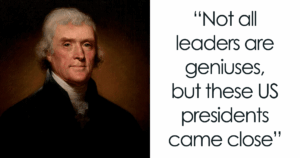“Unlocking the Future: How a Simple Discovery Revolutionized Technology and Changed Our Lives Forever”
The effort which resulted in the development of the first practical transistor was spearheaded by Mervin Kelly, director of research at Bell Telephone Laboratories in Murray Hill, New Jersey. Dissatisfied with the poor efficiency and reliability of vacuum tubes, in the late 1930s Kelly assembled a solid-state physics research team to come up with a semiconductor-based alternative. This work was interrupted by the Second World War, but resumed soon after. Strangely, this project was of relatively low priority for Bell, for while the triode or Audion had originally been developed for long-distance telephony, by the late 1940s the Bell Telephone System was based not on vacuum tubes, but complex yet reliable electromechanical devices known as Strowger Switches. A solid-state switch, if practical, was only anticipated to have limited, specialized applications, such as military radio and radar equipment.
Kelly assembled a diverse team of theoreticians, experimentalists, and engineers, including John Bardeen, Walter Brattain, Robert Gibney, Bert Moore, John Pearson, and the aptly-named William Shockley. Of these, it was the trio of Bardeen, Brattain, under the supervision of Shockley, who would ultimately make the vital breakthrough. While the often difficult Shockley preferred to work alone at home, Brattain and Bardeen formed a productive partnership, embracing the free-wheeling, anything-goes research culture of Bell Labs by working unsupervised late into the night.
The first design the team investigated was proposed by Shockley, and worked similarly to Julius Lilienfeld’s 1925 concept. Built around a block of silicon, like a vacuum tube the device had an anode and cathode – now named the source and drain – at either end, but instead of a grid used a third electrode called a gate to control the flow of electricity through the device. In theory, when current was applied to the gate, the electric field generated would impede electrons from flowing between the source and drain. In practice, however, the design failed to work. Nevertheless, Shockley was convinced his design was workable, and pushed Bell Labs to file a patent with himself named as sole inventor. To Shockley’s dismay, however, Bell had recently unearthed Lilienfeld’s original patents and informed Shockley that his idea was not original.











